A flash design tour of Orange County
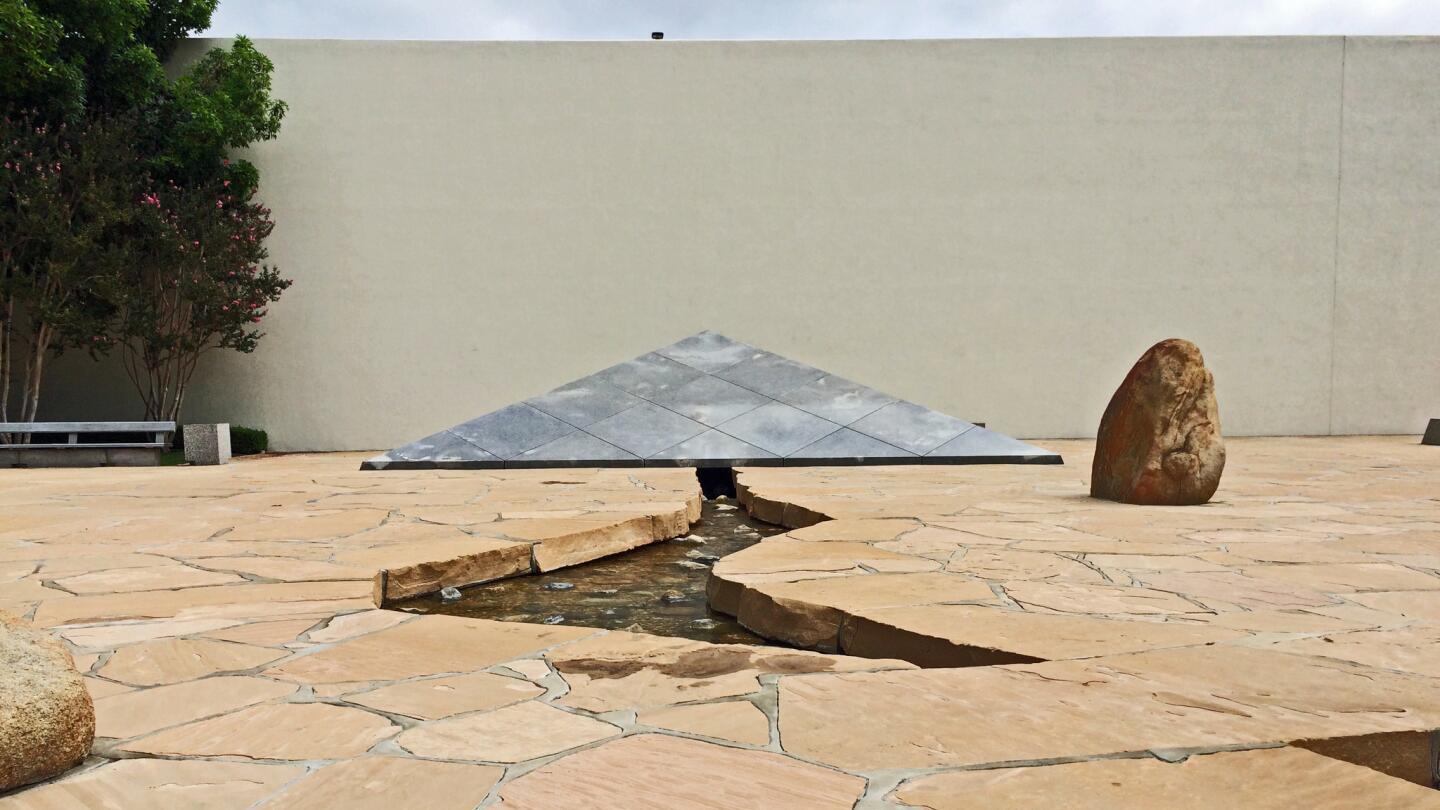
International design journalists have been flocking to L.A. to tour the new Broad museum and take in the city’s architecture. Only the most enterprising make it to Orange County. In this case, fellow writer-ninja Alexandra Lange, who I teamed up with for a flash visit to the county’s top design spots -- starting with Isamu Noguchi’s hidden garden in Costa Mesa.
(Carolina A. Miranda / Los Angeles Times)The stereotype of Orange County is of a vast suburban wasteland devoid of culture. But it has some highly intriguing pockets of architecture and design. (Not to mention some spectacular quesadillas de huitlacoche.) Herewith, a photo tour.
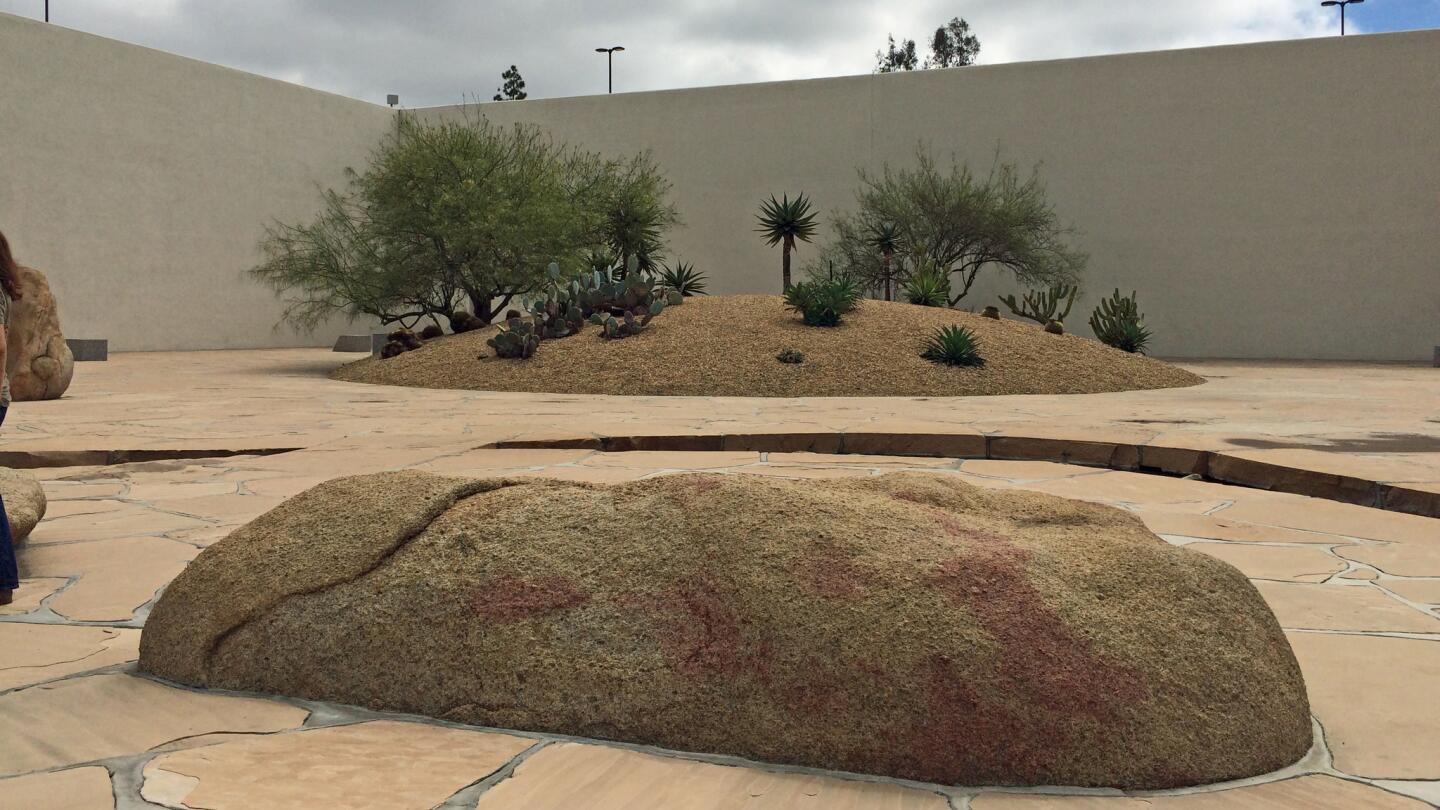
The Noguchi Garden, as it is informally known, is tucked between a cluster of modern glass office towers and the 405 Freeway near South Coast Plaza. The 1.6-acre work -- officially titled “California Scenario” -- reflects on six different elements that comprise the state’s landscape, such as desert, above.
(Carolina A. Miranda / Los Angeles Times)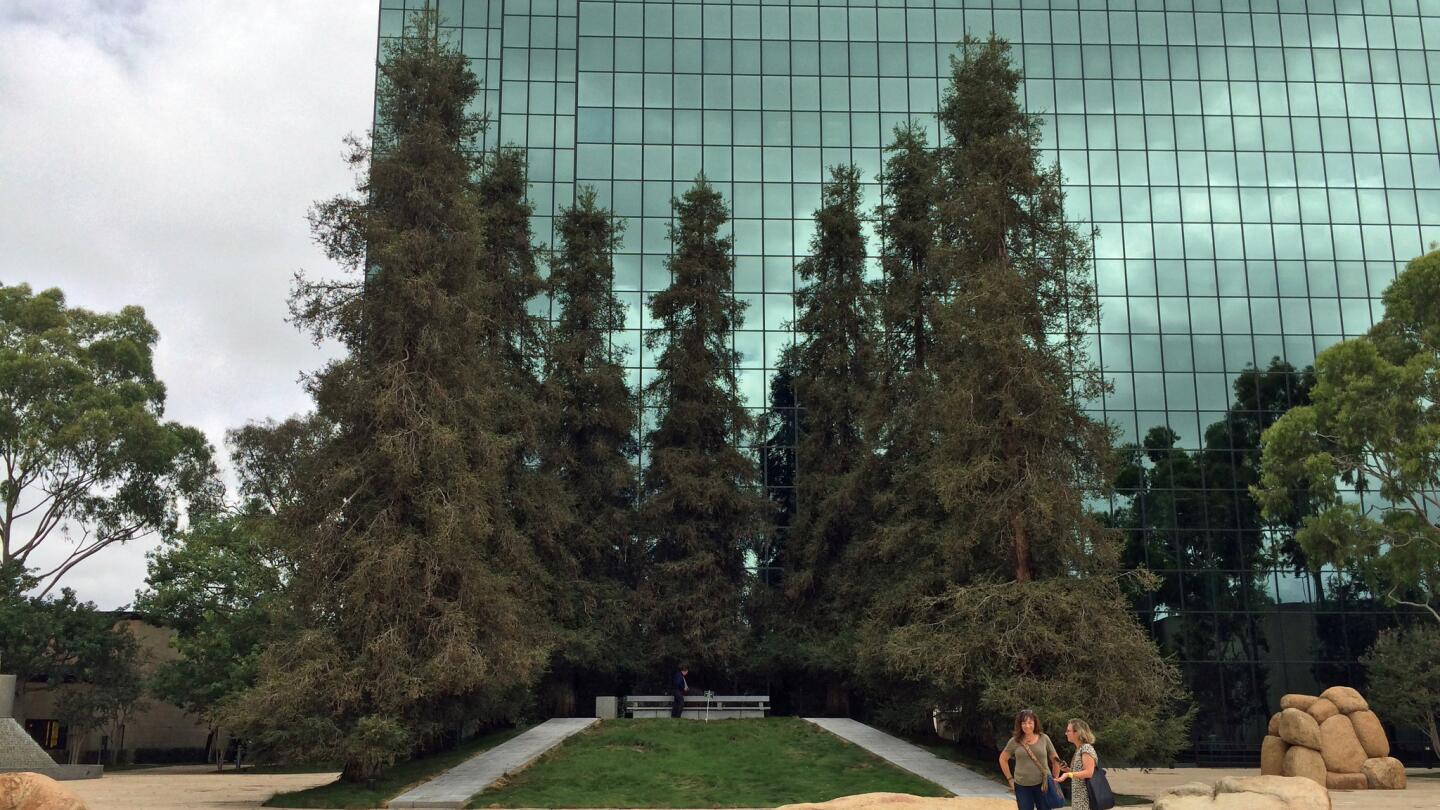
Opposite the desert setting, a mound lined in California redwoods evokes the state’s forests. Temperatures in this area are noticeably cooler than in other parts of the garden. Lange thinks the whole ensemble is a “brilliant testament” to Noguchi’s skill in setting a scene.
(Carolina A. Miranda / Los Angeles Times)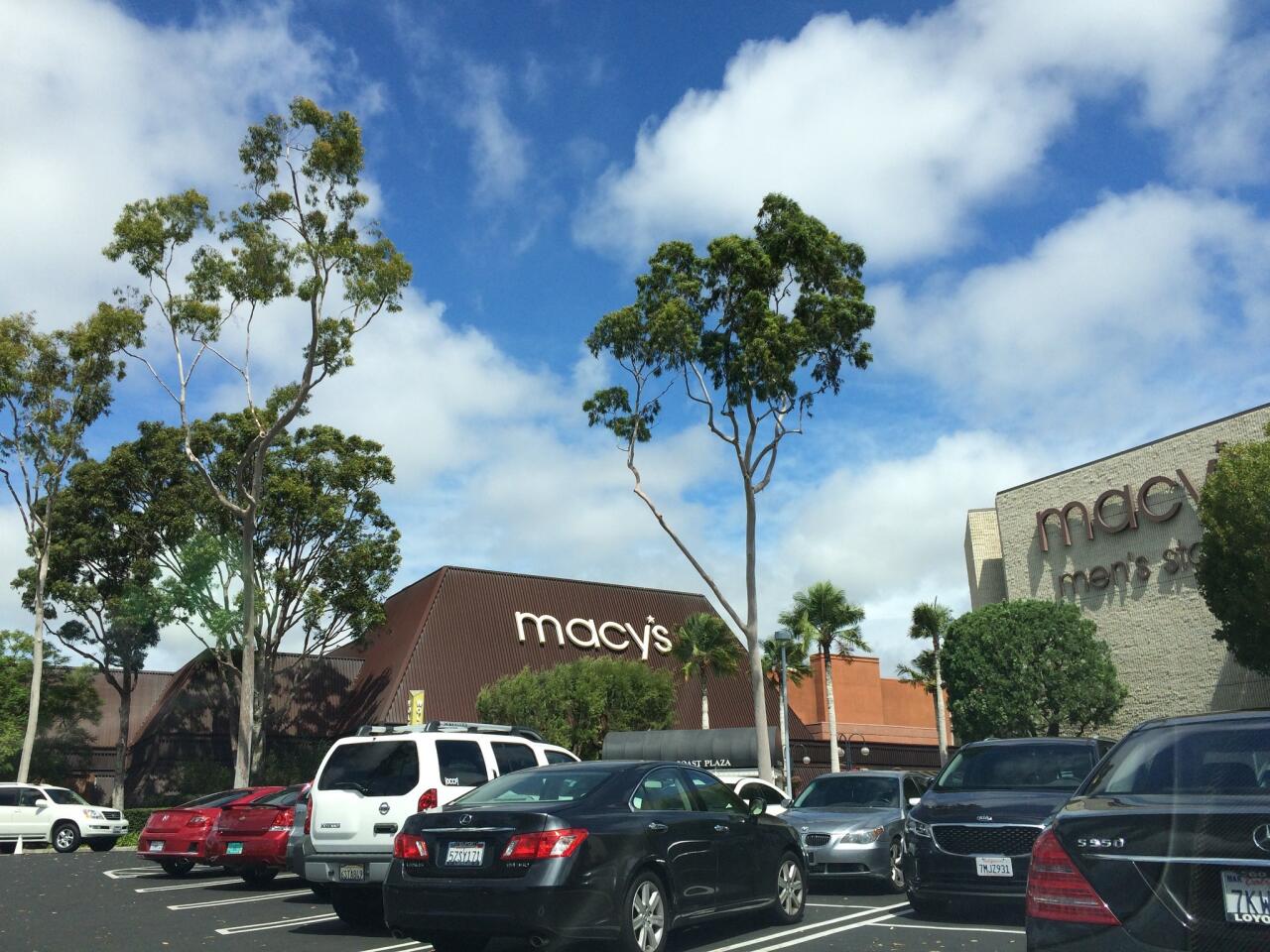
After visiting Noguchi, we did a drive-by of South Coast Plaza to pay a visit to Welton Becket’s Bullock’s wing (now a Macy’s), completed in the 1970s -- a veritable temple to shopping. Becket is perhaps best known for his iconic Capitol Records building in Hollywood.
(Carolina A. Miranda / Los Angeles Times)Advertisement
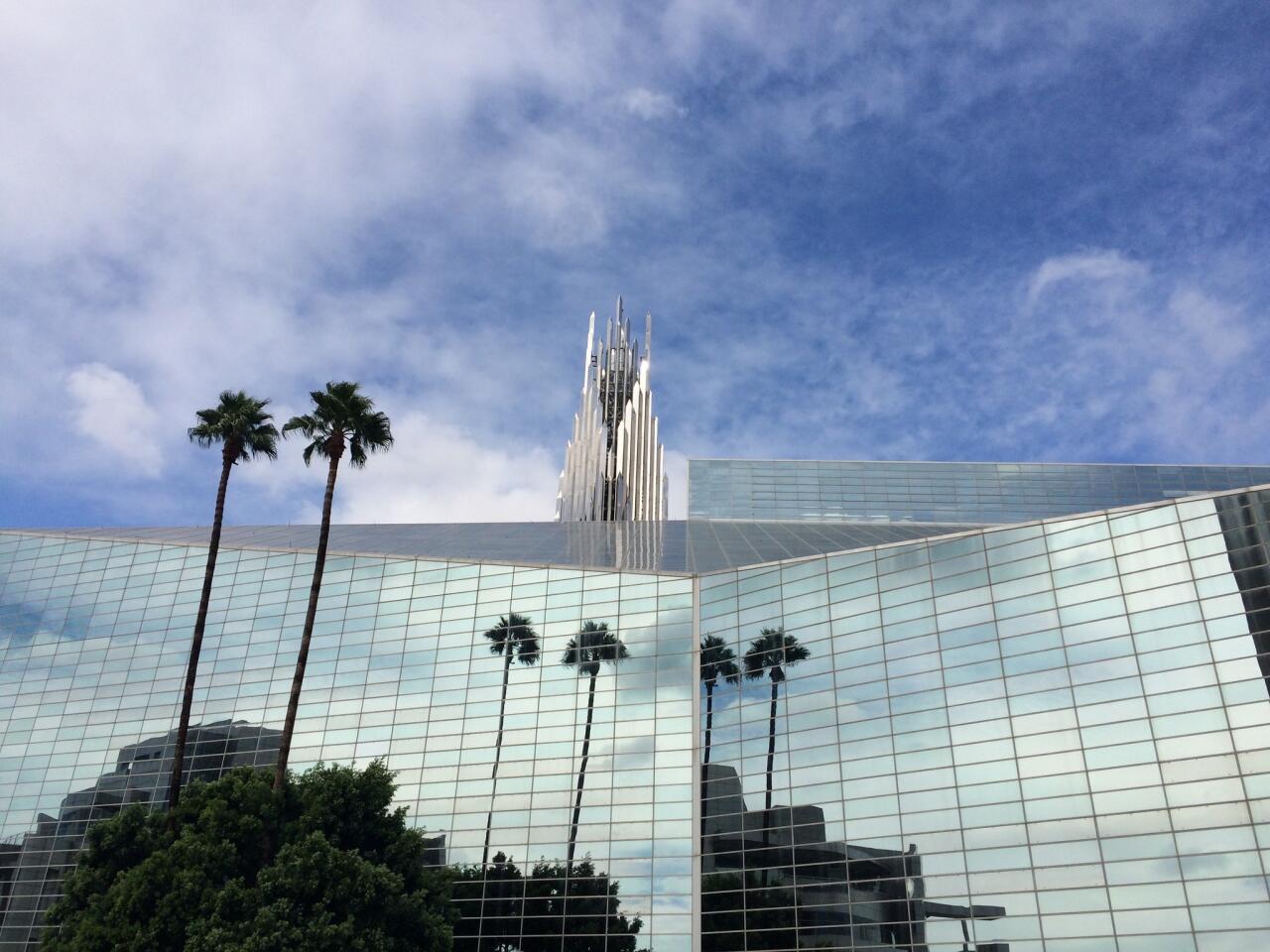
Our last stop on the tour was the Crystal Cathedral (now Christ Cathedral), the early Garden Grove mega-church founded by televangelist Robert H. Schuller. The 34-acre campus contains an array of name-brand architecture, including this glass church and tower by Philip Johnson, completed in 1980 and 1990, respectively.
(Carolina A. Miranda / Los Angeles Times)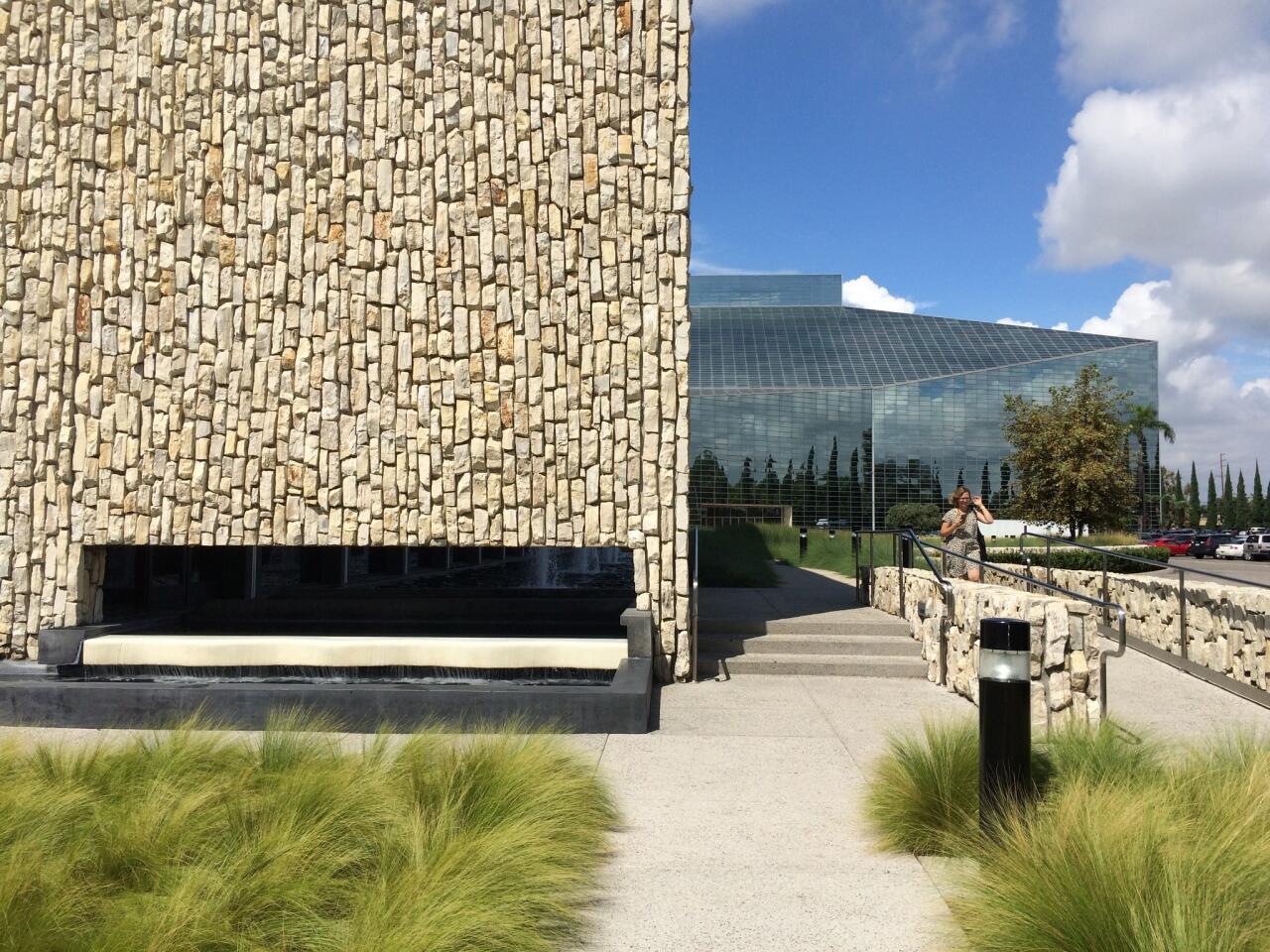
We approached the campus from the south, where it appears like a mirage from Lewis Street. To keep things chronological, Lange and I began with a visit to the oldest structure onsite: a stone-lined sanctuary designed by Richard Neutra that was completed in 1961. Johnson’s Crystal Cathedral can be seen in the distance.
(Carolina A. Miranda / Los Angeles Times)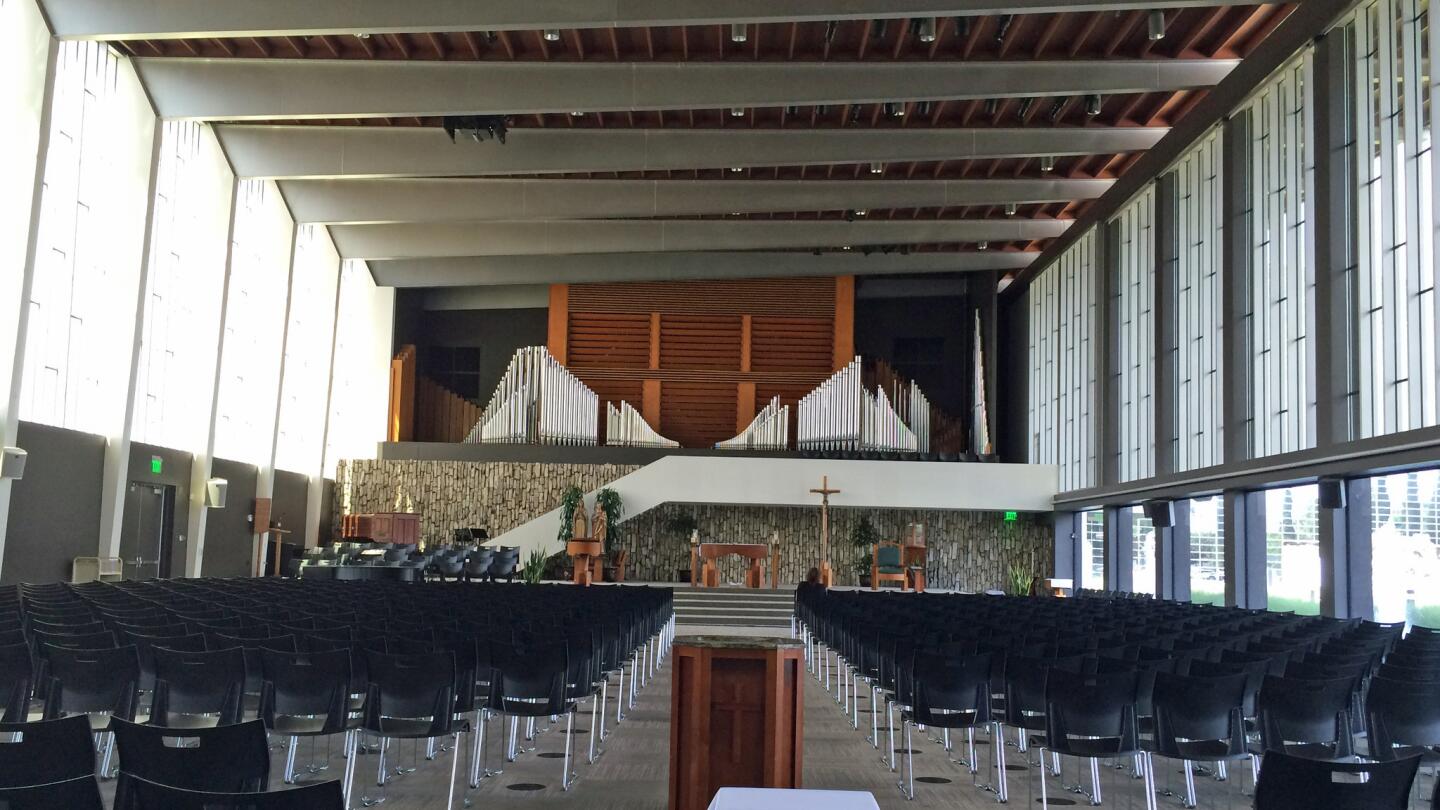
The interior of Neutra’s original sanctuary. The windows to the right could be entirely opened so that Robert H. Schuller might also preach to the cars parked outside in the lot. Unfortunately, the church is missing its original wood pews -- which means row upon unforgiving row of black plastic chairs.
(Carolina A. Miranda / Los Angeles Times)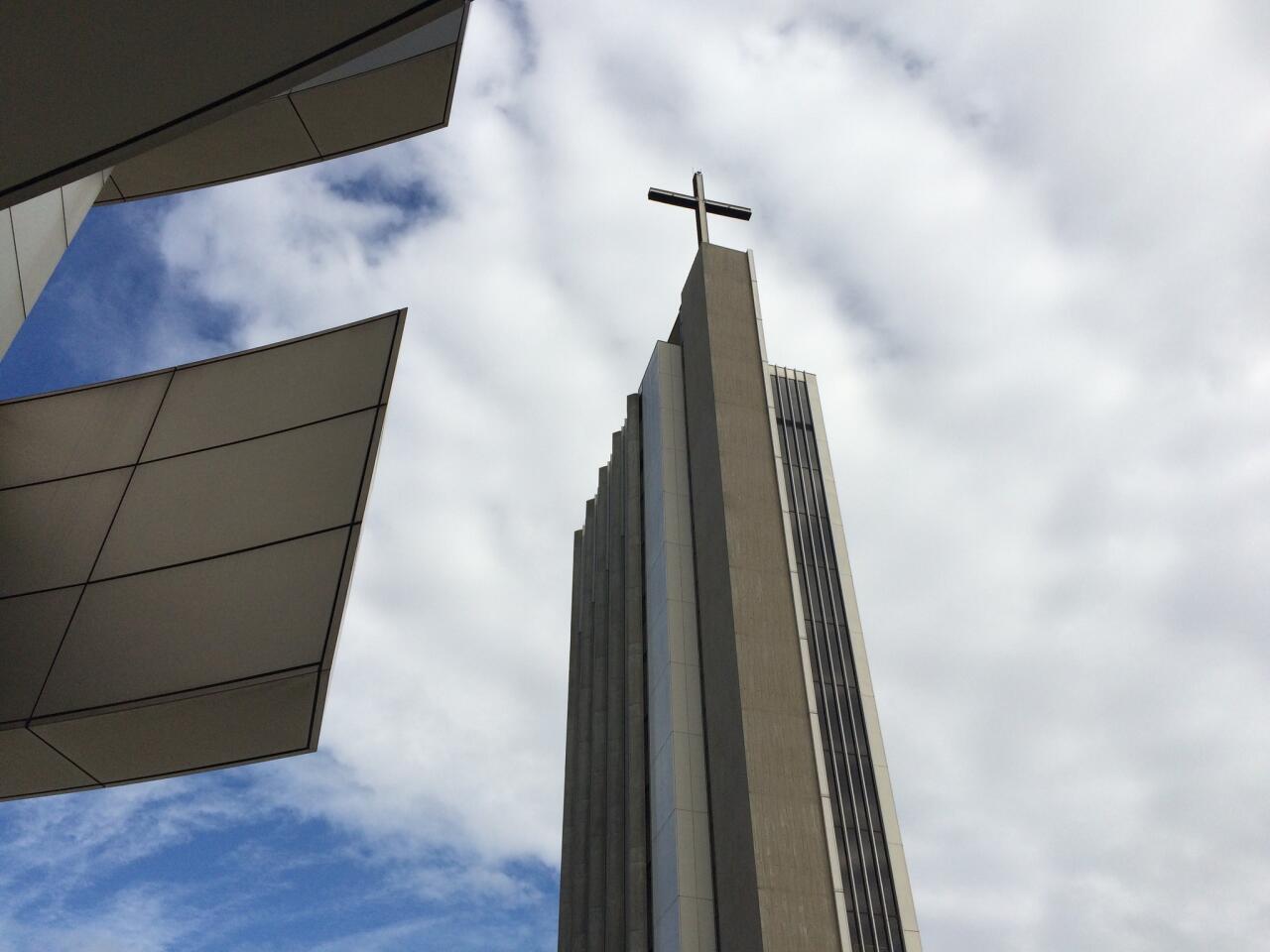
Robert H. Schuller, a profligate builder, added another structure to the campus in 1968: a tower designed by Neutra and his son, Dion Neutra, which contained classrooms and office space. In the foreground are the edges of Richard Meier’s building, originally dubbed the International Center for Possibility Thinking. The entire campus now belongs to the Catholic Church.
(Carolina A. Miranda / Los Angeles Times)Advertisement
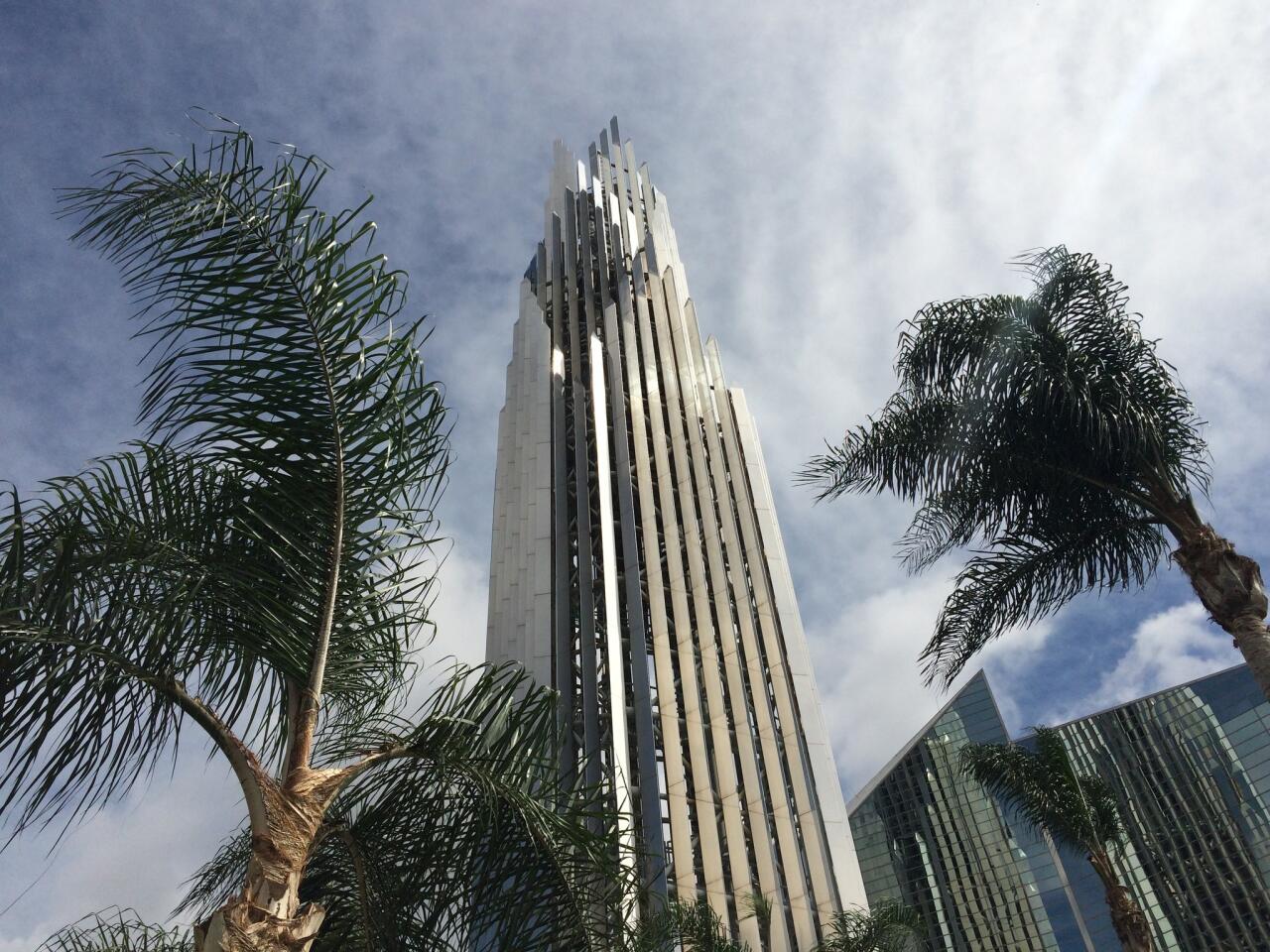
Philip Johnson’s glass cathedral was conceived for the television age. His adjacent tower appears to have predicted the Instagram age: a shining steel shard that doesn’t have a bad angle. Lange says the tower’s omnipresence reminded her of Eero Saarinen’s North Christian Church in Missouri, which has a steeple that dominates the flat landscape around it.
(Carolina A. Miranda / Los Angeles Times)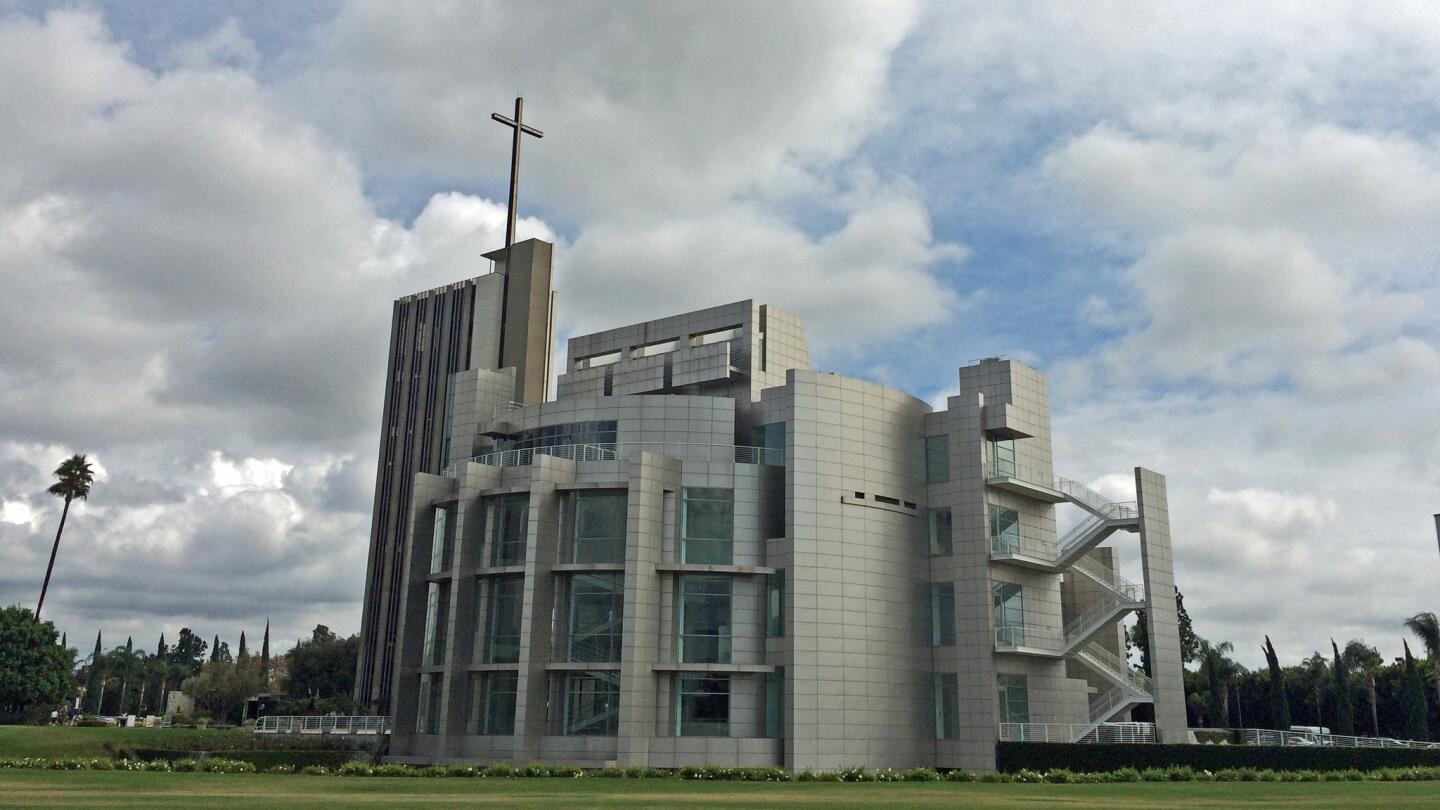
Richard Meier’s contribution to the campus is pretty Meier-y, looking more like a microchip plant than a religious building -- not to mention the Getty Center, which he also designed. (The cross is from the Neutra Tower of Hope that sits behind it.) Moreover, the steely exteriors looked chilly in the cloudy weather.
(Carolina A. Miranda / Los Angeles Times)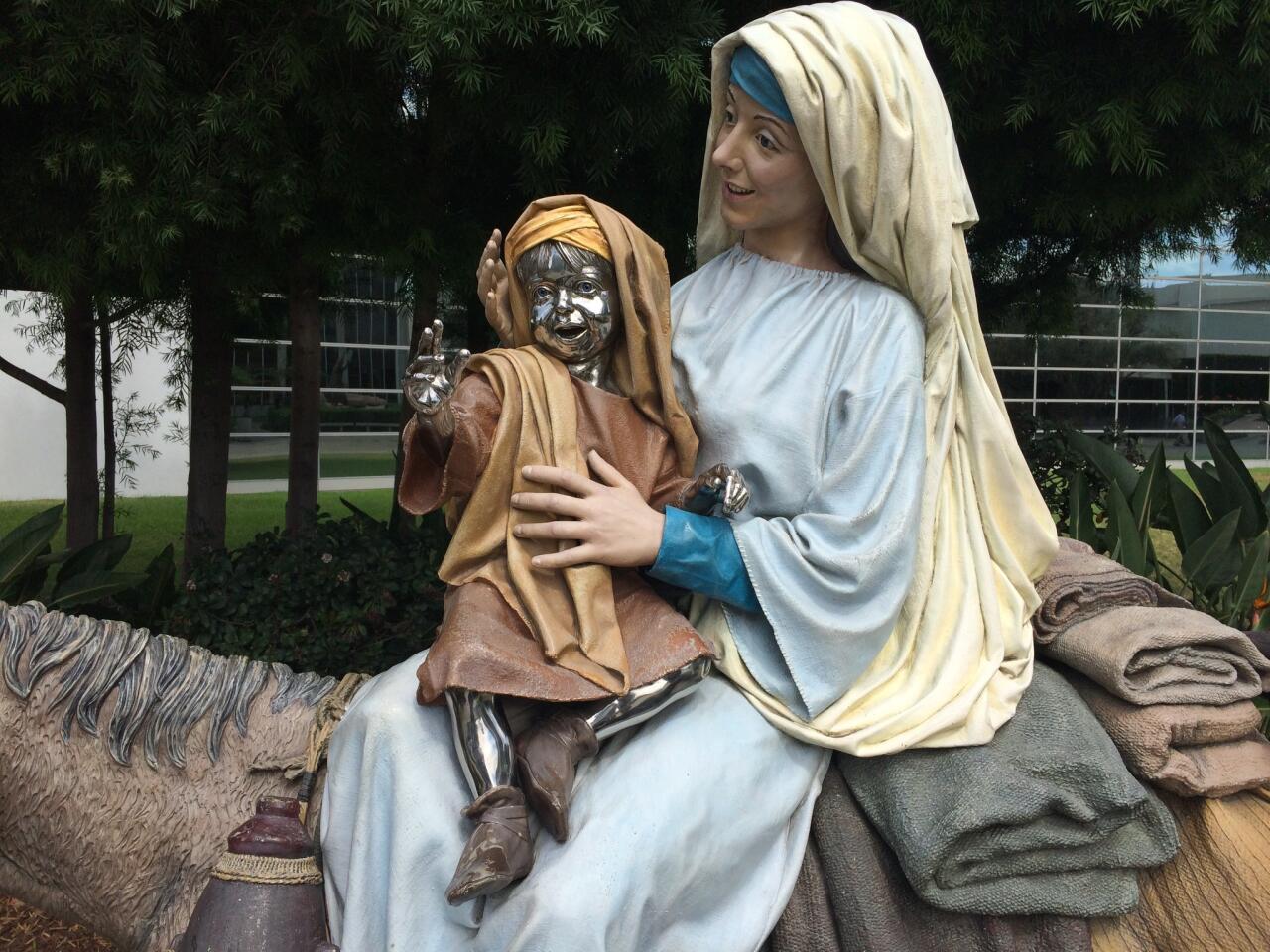
The architecture is pretty remarkable. The statuary, not so much.
(Carolina A. Miranda / Los Angeles Times)


